 Social Enterprises are the flavor of
the season. We are now not only talking about newer enterprises, but also
getting back to the older iconic institutions and checking out whether they fit
into the new nomenclature. Earlier they used to be just called non-profits or
charitable institutions. But clearly the times have changed. The book on Sankara
Nethralaya is written with passion and admiration and what started off as a
not-for-profit affordable eyecare hospital has been retrofitted into a new
framework of social enterprise. I say retrofitted because the authors write
with passion and compassion but forget to bring out the “enterprise” aspect of
the organization clearly.
Social Enterprises are the flavor of
the season. We are now not only talking about newer enterprises, but also
getting back to the older iconic institutions and checking out whether they fit
into the new nomenclature. Earlier they used to be just called non-profits or
charitable institutions. But clearly the times have changed. The book on Sankara
Nethralaya is written with passion and admiration and what started off as a
not-for-profit affordable eyecare hospital has been retrofitted into a new
framework of social enterprise. I say retrofitted because the authors write
with passion and compassion but forget to bring out the “enterprise” aspect of
the organization clearly. What do we mean by enterprise aspect
and how are social enterprises different from plain charities and non-profits?
While that is up for a larger debate one way of defining a social enterprise is
to look at how close it is to a business model in operations while how farther
away it is from the accumulative tendencies of a for-profit. This is indeed a
difficult test to apply, but worth engaging with. If we were to engage with this
debate, the book disappoints because it does not talk in detail about the
revenue model of the enterprise. Somewhere in the text is tucked away the fact
that most of the investments and expansions are funded by philanthropic sources
while the organization is self-sustaining in its operations. We also get to
know from the book that cleanliness, hard work, a punishing work schedule and
discipline are what drives the hospital. However, we do not get to know much
about the operating philosophy, the management structures and the internal
models that makes this enterprise tick.
What do we mean by enterprise aspect
and how are social enterprises different from plain charities and non-profits?
While that is up for a larger debate one way of defining a social enterprise is
to look at how close it is to a business model in operations while how farther
away it is from the accumulative tendencies of a for-profit. This is indeed a
difficult test to apply, but worth engaging with. If we were to engage with this
debate, the book disappoints because it does not talk in detail about the
revenue model of the enterprise. Somewhere in the text is tucked away the fact
that most of the investments and expansions are funded by philanthropic sources
while the organization is self-sustaining in its operations. We also get to
know from the book that cleanliness, hard work, a punishing work schedule and
discipline are what drives the hospital. However, we do not get to know much
about the operating philosophy, the management structures and the internal
models that makes this enterprise tick.
This does not mean that the book is not
delightful. It is eminently readable, with many anecdotal details put in. It is
also very innovative in its presentation divided into nine chapters starting
with the origins of the idea, how it grew in the initial phases, its ongoing
lifelong relation with the patients, the impacts, initiatives and a peek into
the future. Each chapter is accompanied by a section that brings out the
specific achievements of the hospital in the context of the chapter and then
followed by a brief but delightful expert commentary by some leaders who have
known Nethralaya – including people like Dr.Prathap Reddy, AM Naik, Deepak
Parekh, Gopalkrishna Gandhi and Rahul Bajaj. It is a format that is innovative
and brings a bit of the outside perspective to the narrative.
 Having said this, there is always an
expectation from such inspirational books to understand why such enterprises
tick, what drives them and why they are sustainable. Unfortunately the book
does provides neither a framework nor an analysis to understand Nethralaya. We
do not have any insights into the management processes, the revenue model and
the overall operating philosophy about Nethralaya. This is quite unlike the
case of Aravind Eyecare where there is an overwhelming personality of Dr.V
giving his vision and also the systems that follow up on his vision. I am about
sure that Dr.Badrinath of Sankara Nethralaya has that sort of a vision and
systems in place, but the book does not capture it in great detail. The
introductory part tells us that the authors wanted to write a biography of
Dr.Badrinath, the person behind Nethralaya but the doctor insisted on the
hospital being written about than himself. There was a point in this. Because
if you write about the hospital, then one would to the extent possible look
beyond the passion of the promoter. Unfortunately the authors fail in providing
that perspective in their enthusiasm to paint a great picture of the promoter.
Having said this, there is always an
expectation from such inspirational books to understand why such enterprises
tick, what drives them and why they are sustainable. Unfortunately the book
does provides neither a framework nor an analysis to understand Nethralaya. We
do not have any insights into the management processes, the revenue model and
the overall operating philosophy about Nethralaya. This is quite unlike the
case of Aravind Eyecare where there is an overwhelming personality of Dr.V
giving his vision and also the systems that follow up on his vision. I am about
sure that Dr.Badrinath of Sankara Nethralaya has that sort of a vision and
systems in place, but the book does not capture it in great detail. The
introductory part tells us that the authors wanted to write a biography of
Dr.Badrinath, the person behind Nethralaya but the doctor insisted on the
hospital being written about than himself. There was a point in this. Because
if you write about the hospital, then one would to the extent possible look
beyond the passion of the promoter. Unfortunately the authors fail in providing
that perspective in their enthusiasm to paint a great picture of the promoter. For instance talking about cataract
operations the book mentions that while doing 50 cataract surgeries is the norm
among opthalmologists, the doctors in Nethralaya are happy with around 20
surgeries [p.294]. We know that Aravind Eyecare thrives on large numbers
because they argue that the best way to spread the capital costs on costly
equipment is to ramp up the numbers so that the cost of individual surgeries
are brought down. Why 20 is a good number is not clearly argued in the book
either from the economic, hygiene or effectiveness point of view. This is
stated as a fact and the rest of the argument trails on simplicity of life and
not being ostentatious. This laudatory and idolatory approach of the book is
its main failing.
For instance talking about cataract
operations the book mentions that while doing 50 cataract surgeries is the norm
among opthalmologists, the doctors in Nethralaya are happy with around 20
surgeries [p.294]. We know that Aravind Eyecare thrives on large numbers
because they argue that the best way to spread the capital costs on costly
equipment is to ramp up the numbers so that the cost of individual surgeries
are brought down. Why 20 is a good number is not clearly argued in the book
either from the economic, hygiene or effectiveness point of view. This is
stated as a fact and the rest of the argument trails on simplicity of life and
not being ostentatious. This laudatory and idolatory approach of the book is
its main failing. I am about sure that there is much more
to Nethralaya than the patient endorsements, industry endorsements,
achievements etc., that are listed in the book. There is something for
enterprises in this space to learn from the experiences of Nethralaya very much
the way we have learnt from Aravind. This learning would have accrued had the
authors removed themselves from the position of admirers and just moved to
students of organisations. Their need to tell the story is greater than their
need to understand why Nethralaya works. That is the undoing of a rather
informative and delightful book.
I am about sure that there is much more
to Nethralaya than the patient endorsements, industry endorsements,
achievements etc., that are listed in the book. There is something for
enterprises in this space to learn from the experiences of Nethralaya very much
the way we have learnt from Aravind. This learning would have accrued had the
authors removed themselves from the position of admirers and just moved to
students of organisations. Their need to tell the story is greater than their
need to understand why Nethralaya works. That is the undoing of a rather
informative and delightful book.
In-Sight
Sankara Nethralaya’s Passion for Compassion
VV Ranganathan, George Skaria and Meera Prasad
Lone Tree Books, 2012
pp.348.






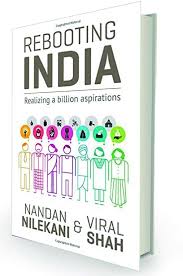








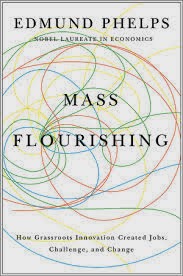









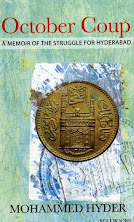

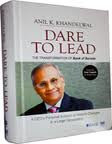














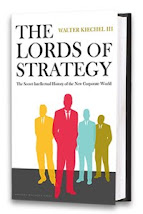














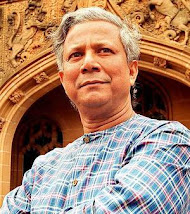
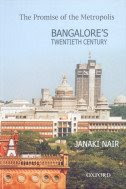







![Hyderabad: A Book [or two] and A Movie](http://3.bp.blogspot.com/_mxWA9ZVkKhQ/S0vnLAO90CI/AAAAAAAABYM/WgbSbAcAaEk/S214/luther1.0.jpg)

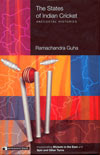





![Two Lives [and this is not about Vikram Seth]](http://1.bp.blogspot.com/_mxWA9ZVkKhQ/S0vjkyDYRvI/AAAAAAAABXM/mJGK-_gZiNg/S214/mansur.jpg)





No comments:
Post a Comment